Masahisa Fukase 1961-1991
Retrospective
Mar. 3—Jun. 4, 2023
- Mar. 3—Jun. 4, 2023
- Closed Mondays (except May 1st is open)
- Admission:Adults ¥700 (560)/College Students ¥560 (440)/High School and Junior High School Students, Over 65 ¥350 (280) *Prices in parenthesis apply to groups of 20 or more. (Reservation is required.) , admission is free for grade school children or younger; junior high school students living or attending schools in the Tokyo metropolitan area and holders of Japan’s disability identification cards (shogaisha techo) together with two caregiver, and holders of the museum’s annual passport (check the Passport benefits at a glance)
It is with great pleasure that we present ”Masahisa Fukase 1961–1991 Retrospective” at the Tokyo Photographic Art Museum. By focusing intently on his personal life, Masahisa Fukase carved out a unique place for himself in the history of Japanese photography in the 1960s. While exploring the origins of photography, Fukase developed a major practice among a group of artists associated with what later came to be known as shi-shashin (”I-photography”). Fukase pointed his camera at those in his immediate surroundings, including his wife and family; and while exposing his own private life, he consciously explored the madness that lay deep within himself. This madness led to remarkable and unparalleled works that combined Fukase’s loving gaze for his subjects with his carefree sense of humor.
This exhibition boasts a substantial assemblage of works, including pieces from the museum collection that are drawn from major Fukase works, such as ”Yūgi (Homo Ludence),” ”Yōko,” ”Karasu (Ravens),” and ”Kazoku (Family).” Other highlights include ”Yōko” (part of the From Window series), ”Karasu (Ravens)”, acquired by Nihon University College of Art in the early 1980s; and ”Bukubuku” and ”Sasuke,” both from a private collection. Tracing Fukase’s trajectory from the 1960s to the early 1990s, the exhibition provides viewers with an opportunity to experience the artist’s unique world.
Chapter
1|”Yūgi [Homo Ludence]”
2|”Yōko”
3|”Kazoku [Family]”
4|”Karasu [Ravens]”
5|”Sasuke”
6|”Aruku me [Walking Eye]”
7|”Shikei [Private Scenes]”
8|”Bukubuku"
1|”Yūgi [Homo Ludence]”
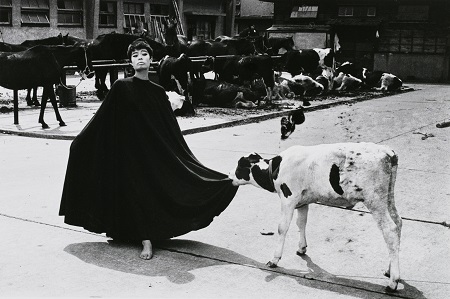
”Slaughter, Shibaura,” from ”Yūgi (Homo Ludence),” 1963, Collection of Tokyo Photographic Art Museum © Masahisa Fukase Archives
Masahisa Fukase’s first photo book rom ”Yūgi (Homo Ludence)” (Chūō-kōron-sha), an anthology of photographs taken over the previous ten years under the supervision of ’Camera Mainichi’ editor Shōji Yamagishi, was published in 1971. It consists of six sections:”Mei (Memento)” looks back on the pregnancy of his former partner, Yukiyo Kawakami, with whom he lived for eight years;”To (Slaughter)” contains images of Yōko Wanibe, whom he met after Kawakami’s disappearance, and livestock being dismembered at a slaughterhouse; ”Kotobuki (Congratulation),” straightforwardly depicts his life with Yōko shortly after they got married; ”Gi (Frolic)” portrays the underground scene in Shinjuku, Tokyo, where Fukase had gone after leaving the home he shared with Yōko, and the lifestyle of young people living together as a group; and ”Haha (Mother) ” and ”Fu (Music)” feature Yōko and her mother. ”Yūgi” conveys the mutual interplay of all living things, and the contradictory yet interconnected phenomena of life and death, meeting and parting.
*Note: The English title and chapter translations are written exactly as they appear in the original publication.
2|”Yōko”
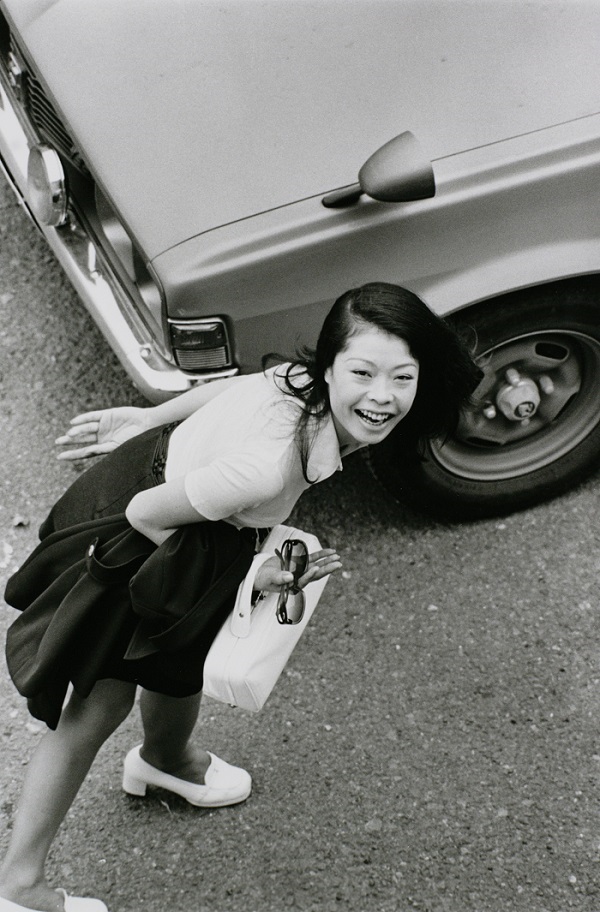
Untitled(From Window), from ”Yōko,” 1973 © Masahisa Fukase Archives
After they married, Fukase and Yōko continued their photographer-subject relationship, first in the 1960s at the Soka-Matsubara public housing complex where they lived, and then in the 1970s when he photographed her on visits to Hokkaido, Kanazawa, Izu, and various other locations. In autumn 1973, he took a series of photographs of Yōko heading off to work at a gallery every morning from his fourth-floor window using a telephoto lens, and published them in a magazine under the title “Yōko”. In 1974, he showed the same work in the exhibition ”New Japanese Photography” at the Museum of Modern Art, New York. The series was further expanded to contain photographs of Yōko when they visited New York together. In this way, their private lives were turned into art and became public, gradually leading to “a paradox in which they seemed to be together solely for the sake of photography,” and they separated in 1976.
3|“Kazoku [Family] ”
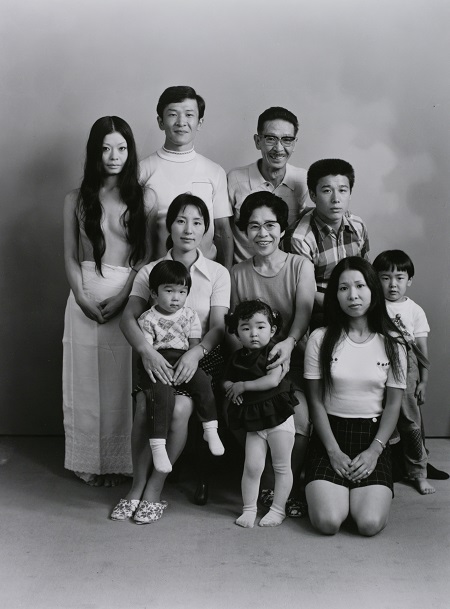
“Upper row left to right: My wife, Yōko; my younger brother, Toshiteru; my father, Sukezō; Hisashi Daikoji, my sister’s husband. Lower row left to right: Akiko, Toshiteru’s wife; Gaku, my sister’s son; my mother Mitsue; Kyōko, Toshiteru’s daughter; my sister Kanako and Takuya, Toshiteru’s son.,” from “Kazoku(Family),” 1971, Collection of Tokyo Photographic Art Museum © Masahisa Fukase Archives
In the summer of 1971 Fukase, then in his mid-thirties and missing his hometown, brought Yōko along on a visit to his birthplace of Bifuka Town, Nakagawa District, Hokkaido. He used an old-fashioned Anthony Model A made by Tachihara in the photo studio his family ran to take commemorative photos of the family, and took photographs of his family including Yōko. After this, he frequently returned to his hometown and took similar pictures at the family studio. In 1974, he took photographs of himself, his parents, and Yōko to eventually be displayed at each person’s funeral or memorial ceremony. He halted the series in 1975, but in 1985, when he saw his father Sukezō in failing health, he resumed it, saying, “Everyone in the family, every person I see upsidedown on the focusing screen, will die. The camera is a device for documenting the dead.” After Sukezō died in January 1987, he gathered his family, dressed in mourning clothes, at the photo studio on the day of his funeral, and took more photographs, placing the funeral photo of Sukezō Fukase took in 1974, in the position that his father ought to occupy. In 1989, Fukase Photo Studio closed and the family went their separate ways. The series, which had continued for nearly 20 years, also drew to a close.
4|“Karasu [Ravens]”
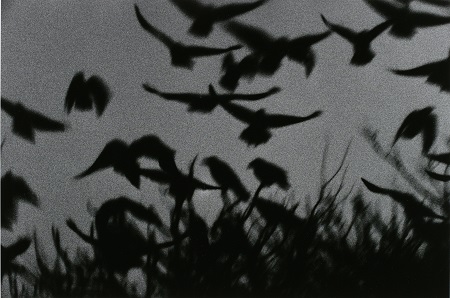
“Kanazawa,” from “Karasu [Ravens],” 1978, Collection of Nihon University College of ART © Masahisa Fukase Archives
In the spring of 1976 Fukase set off on a trip, partially in flight from his failing marriage. His destination was Hokkaido, where the primal landscape he remembered from childhood still endured. He traveled by sleeper train to Aomori and the Seikan ferry to Hakodate, continued north mainly by bus to his hometown of Bifuka Town, on to Cape Nosappu in Nemuro, and then to Cape Erimo with stops in Kushiro, Shibecha, Todowara, Bihoro, and Abashiri. The photographs he took on the way contained numerous ravens inhabiting these areas. After returning to Tokyo he showed the photos to his editor Yamagishi, who noted that the ravens had been captured marvelously, and Fukase held an exhibition that on Yamagishi’s recommendation was titled “Karasu (Ravens)”. This exhibiton earned him the 2nd Ina Nobuo Award the following year in 1977, and this work became one of Fukase’s masterpieces. After the show, he decided to focus deliberately on ravens, which he had shot as part of the landscape on his trip, and he continued photographing them in Hokkaido and in Yōko’s hometown of Kanazawa. Some years later he remarked that “I have coped with my situation by becoming a raven myself,” and with further changes in his psychological state, he shifted his photographic perspective to scenes as seen from the ravens’ point of view.
5|“Sasuke”
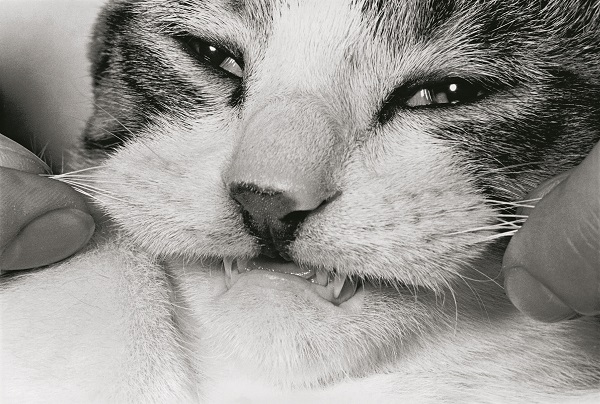
Untitled, from “Sasuke,” 1977-1978, Private collection © Masahisa Fukase Archives
Over the course of his life Fukase lived with and photographed many cats, with two of his most memorable subjects being Sasuke and Momoe. In the early summer of 1977, about six months after his separation from Yoko, he received a kitten through his friend the photographer Yutaka Takanashi. When Fukase took him home, he named him Sasuke because the way he energetically leaped around reminded him of the ninja Sasuke Sarutobi. Soon afterward, however, the young cat disappeared. When it became evident that he was not coming back, Fukase received another kitten that looked very similar, named him Sasuke II, and took him with him everywhere he went. A year later, Sasuke II had grown up and his movements were slower and lazier, so he took in a new kitten and named her Momoe. Looking back on his days spent photographing his two cats, Fukase wrote, “I wasn’t interested in the grace or cuteness of cats. I saw myself reflected in the cats’ eyes. I wanted to photograph the love that I saw there.”
6|“Aruku me [Walking Eye]”
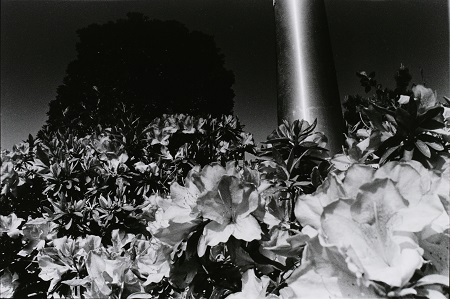
Untitled, from “Aruku me [Walking Eye],” 1983, Collection of Tokyo Photographic Art Museum © Masahisa Fukase Archives
While his 1976 trip had been an attempt to reveal the primal landscape of his childhood as he fled Tokyo for his homeland, in this work he endeavored to stir up memories of Tokyo and capture afterimages of his years there as he grew older. In 1982 Fukase revisited, in chronological order, the 14 places he had lived during the three decades since his arrival in Tokyo. When he visited the Soka-Matsubara housing complex where he had lived with Yōko, he was aware of a sense of dread, or the guilt of a criminal returning to the scene of the crime, and confessed that “my desire to take photographs grew unceasingly, and the gravestones of images piled up in mounds.” As he continued walking around with camera in hand, Fukase felt he had become a “walking eye” to the extent that the shutter automatically clicked as soon as his optic nerve entangled with something in his field of vision. Eventually, he got out a map of Tokyo and began filling in the areas where he had walked aimlessly in red. He remarked that “the same rivers, streets, and crowds of people passed ceaselessly and monotonously before my eye,” and decided to name the series “Aruku me (Walking Eye).”
7|“Shikei [Private Scenes]”
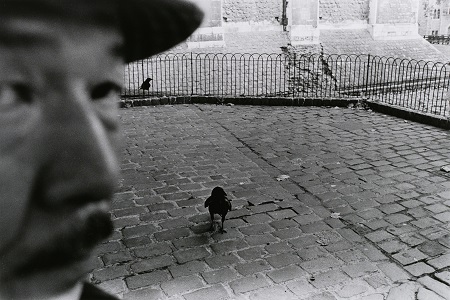
“London,” from “Shikei [Private Scenes],” 1989, Collection of Tokyo Photographic Art Museum © Masahisa Fukase Archives
As if by process of elimination, as he photographed the subjects that fascinated him Fukase steadily lost them, and in his later years the only subject left was himself. In 1989, on a trip to Europe and India, he began shooting landscapes with parts of his body in the frame. He titled these photographs “Shikei (Private Scenes),” as he saw the things captured in the photographs as reflections of himself. After shifting the setting back to Tokyo, he continued to work with the same technique for a full year starting in December 1990. “Shikei ’92 (Private Scenes ’92),” presented at Ginza Nikon Salon in February 1992, was extraordinary in that the walls of the venue were covered with 444 prints, most of which featured Fukase intruding on the image. In June of that year, Fukase fell down the stairs of a bar he frequented and suffered severe and lasting injuries. He spent the rest of his life in a special nursing home for the aged, never to click a camera shutter again.
8|“Bukubuku”
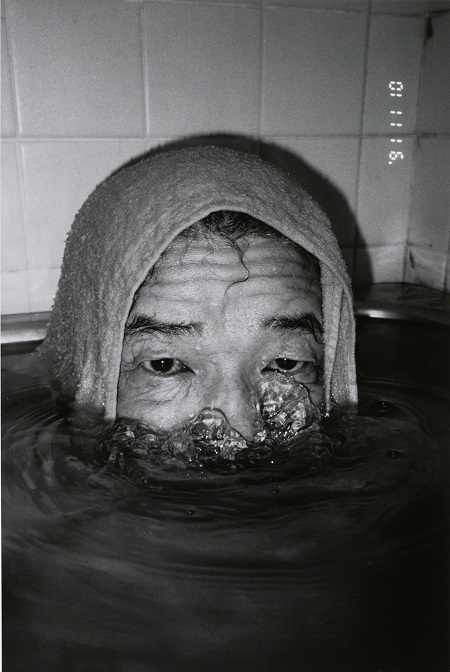
“91.11.10,” from“Bukubuku,” 1991, Collection of Tokyo Photographic Art Museum © Masahisa Fukase Archives
Late in 1991, Fukase spent about a month photographing himself in the bathtub at home. When he shot himself from the water below, looking down at the camera, the light source’s angle of incidence grew, causing the entire surface of the water to reflect light. If there were no ripples on the water’s surface it became a mirror reflecting the image underwater, creating the odd phenomenon of two of Fukase’s faces connected at the top and bottom. He liked the randomness of the outcomes, which he could not predict before the film was developed. The following are excerpts from a journal entry written on the last day of shooting: “9:45. Tonight I will finish Bukubuku completely.” “I have done enough with Bukubuku and I am sure it will endure as a world-class masterpiece.” “What will possess me next?” “My whole life has been nothing but an obsession with photography.” In 1992, this series was published along with “Shikei (Private Scenes)” as part of “Shikei ’92 (Private Scenes ’92).” This exhibition reproduces part of the show at the Ginza Nikon Salon in 1992.
Masahisa Fukase|
Organized by Tokyo Metropolitan Foundation for History and Culture, Tokyo Photographic Art Museum
Sponsored by the Corporate Membership of Tokyo Photographic Art Museum
With Cooperation of Masahisa Fukase Archives
Events
- 30 Years of Masahisa Fukase
-
Mar. 3
(Fri)
17:00~18:30 (Door open16:30)
*only in Japanese
Guest|Tomo Kosuga (Director, Masahisa Fukase Archives)
Venue|Tokyo Photographic Art Museum, 1F Hall
Capacity|190
*Free, However in order to enter, you need the ticket “Masahisa Fukase 1961-1991 Retrospective” exhibition.
*Numbered tickets will be distributed at the information counter on the 1st floor from 10:00. - 13 Ways of Looking at Fukase
-
Mar. 5
(Sun)
14:00~16:00 (Door open13:30)
*with consecutive interpretation
Guest|Amanda Maddox(Lead Curator, World Press Photo)
Venue|Tokyo Photographic Art Museum, 1F Hall
Capacity|190*Free, However in order to enter, you need the ticket “Masahisa Fukase 1961-1991 Retrospective” exhibition.*Numbered tickets will be distributed at the information counter on the 1st floor from 10:00. - Essey “Thirteen Ways of Looking at Fukase” Amanda Maddox
-
May. 23
(Tue)
~
This is the newly written essay for this exhibition by Amanda Maddox(Lead Curator, World Press Photo).
Thirteen Ways of Looking at Fukase Amanda Maddox[PDF]


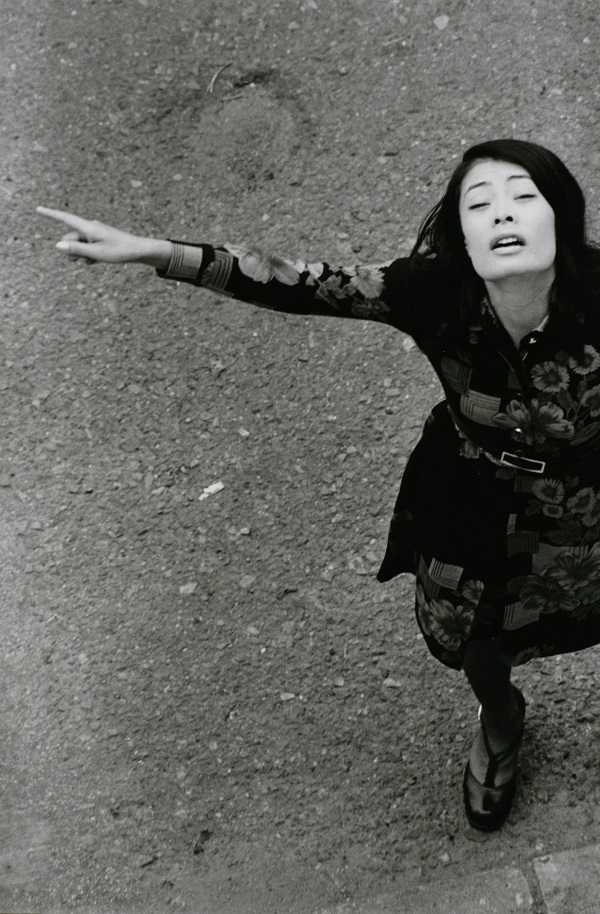
![チラシ1[pdf]](http://topmuseum.jp/upload/4/4275/thums/FM_leaflet.png)
![出品作品リスト2[pdf]](http://topmuseum.jp/upload/4/4275/thums/book_list.png)
![出品作品リスト1[pdf]](http://topmuseum.jp/upload/4/4275/thums/list_of_works.png)